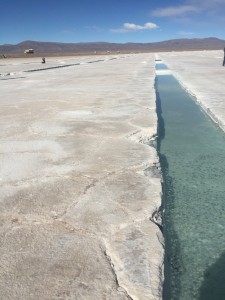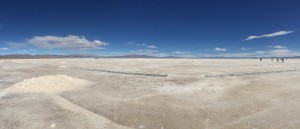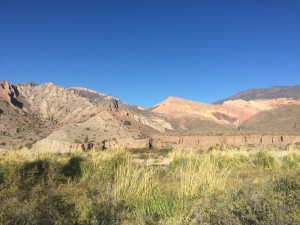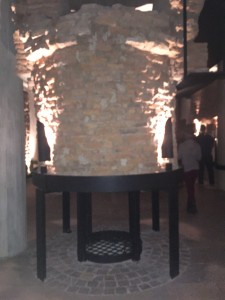On Saturday we went to Salinas Grandes, which is salt flat, located in the provinces of Salta and Jujuy. It is around 240 km2 and was a lake thousands of years ago that has since dried up and is now about a ½ km thick chunk of salt. There were also pools of water in the salt that are occasionally excavated to help separate the minerals from the salt.
 It was a very beautiful sight to see and was one of the most beautiful places in Argentina that we have visited. The light colors of the salt contrasts to the blue of the sky / water and the dark mountains in the background.
It was a very beautiful sight to see and was one of the most beautiful places in Argentina that we have visited. The light colors of the salt contrasts to the blue of the sky / water and the dark mountains in the background.
 We stayed there for about half an hour and took lots of pictures and then had some time to buy crafts. There were venders selling sweaters that were made of llama fur, llamas and other figures made out of chunks of salt, llama keychains and all other things llama.
We stayed there for about half an hour and took lots of pictures and then had some time to buy crafts. There were venders selling sweaters that were made of llama fur, llamas and other figures made out of chunks of salt, llama keychains and all other things llama.
To get there we had to go through a lot of little villages which each had their own vendors selling everything llama. We even had the opportunity to take pictures with two llamas. We also went through many beautiful landscapes. We stopped at a lot of different villages and other spots to take pictures and to soak in the beauty. One of the other beautiful things was the many mountains that had different colors such as red, pink, blue/green, brown, grey, yellow and other mixes of colors that are made from oxygen reacting to different minerals.


